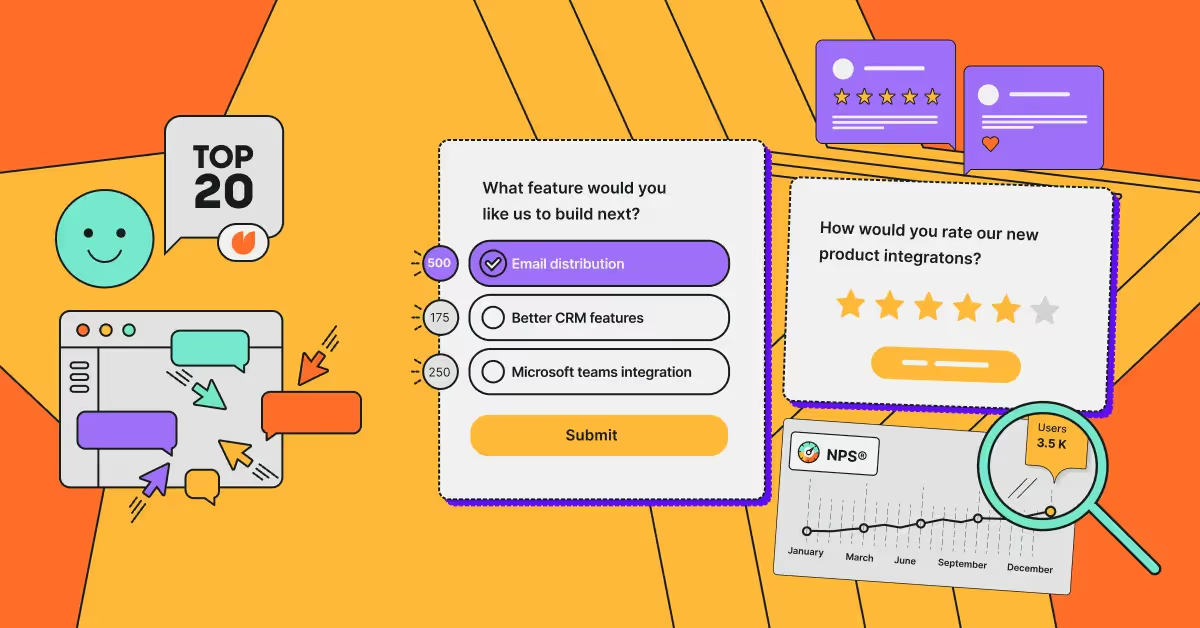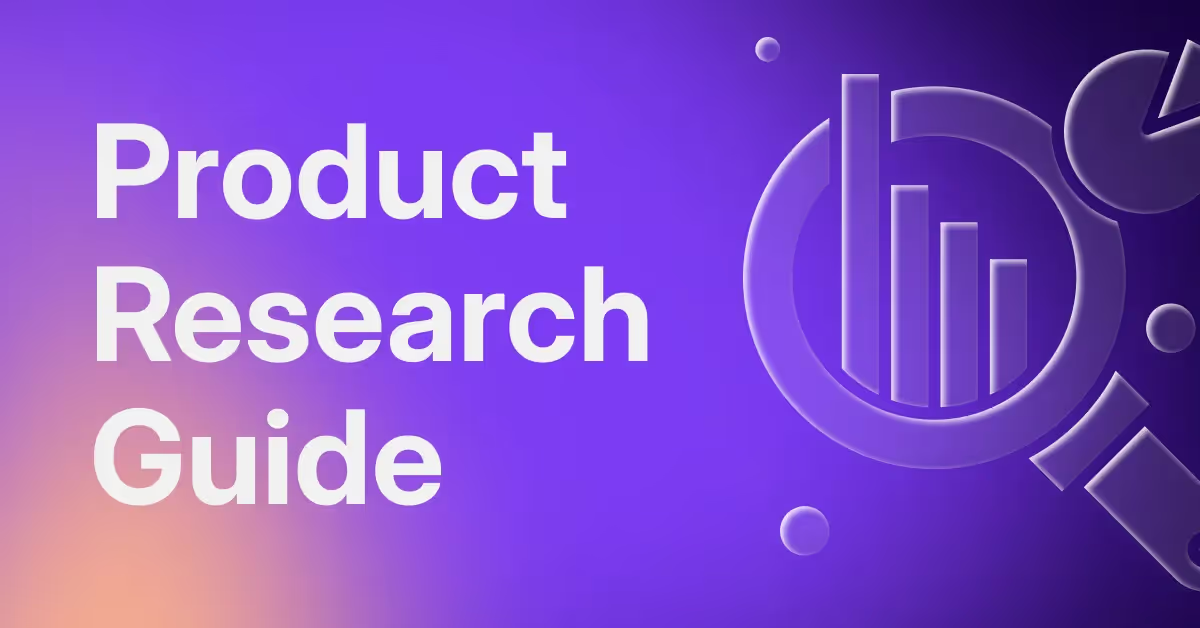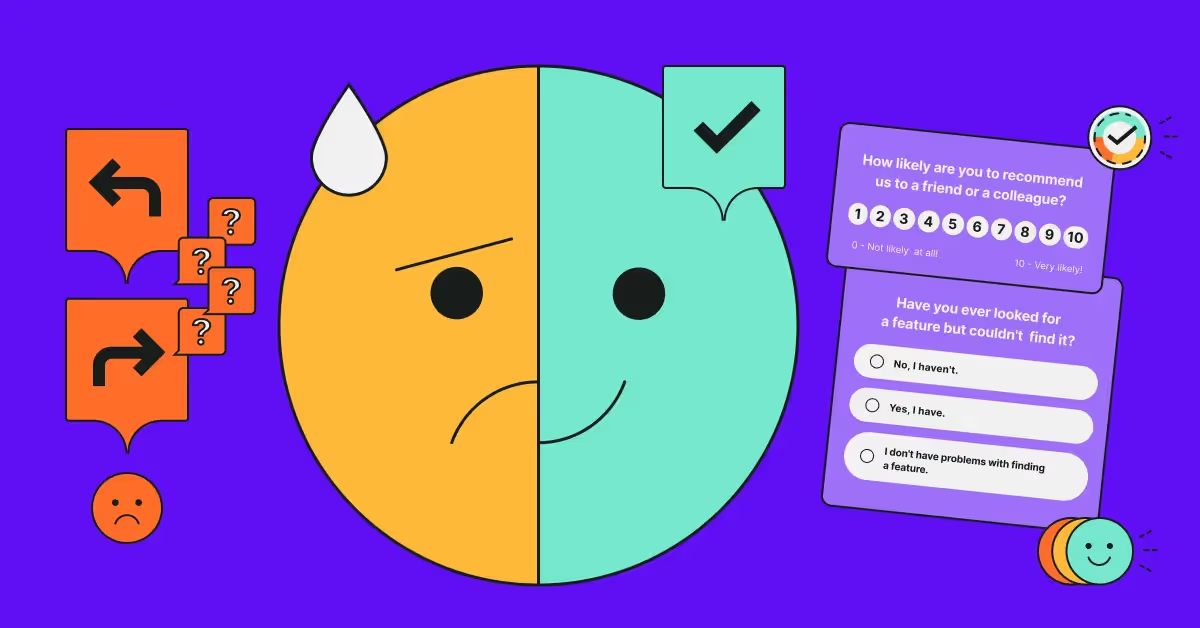One of the most insightful ways to tap into the minds of your users is through user interviews. They can help unearth your users' motivations, behaviors, and needs, guiding your team toward a product that truly resonates with its intended audience.
But how do you ensure your user research interviews are effective and yield the insights you need? The key lies in a robust interview template that serves as the backbone of your research process. Creating it is both an art and a science, striking a delicate balance between structure and spontaneity.
In this blog post, we'll walk you through the process of creating a structure for your user interview and provide questions to get you inspired.

What is a user interview?
A user interview is one of the most common user research methods. It’s used to gather in-depth insights about a product or service directly from its users or potential users.
User interviews are structured around a set of predefined questions but are often conversational and open-ended, allowing users to share their thoughts, opinions, and personal experiences with regard to the product.
An important part of the user research process, interviews typically provide qualitative data. Although the insights might be rich in detail and offer interesting observations, they’re not always statistically representative.
Therefore, you should employ user interviews in conjunction with other research methods in a mixed-methods approach to provide a holistic view of user needs and behaviors.
It’s also important to recruit the right users for your research interviews, as the quality of your results will largely depend on who you're interviewing.
Try to recruit a range of users who represent different segments of your target audience. This could include new users, experienced users, and those who have stopped using your product or service.
Use a screener survey to ensure your participants meet your criteria. This short survey can help you gather basic information about potential participants and identify those who match your target user profile:
How to structure your user interview
Structuring a user research interview is like crafting a narrative journey where your user is both the guide and the hero of the story. It's all about asking the right questions in the right sequence to uncover rich, in-depth insights about your users.
But it's not just the questions that matter; it's also about creating an environment where users feel comfortable and ready to share their experiences.
Let's delve deeper into how you can structure a user research interview effectively.
Building rapport
The beginning of the interview is all about setting the tone. Make sure the user feels comfortable and understands the purpose of the interview. A typical interview should start with an introduction of yourself, your role, and a brief overview of what the session will entail.
Explain to the user why their participation is important and reassure them about the confidentiality of their responses. You could say, "Your responses are anonymous, and we'll use this information to improve our product/service." It's also crucial to obtain their consent for recording if you plan to do so.
This initial stage is also great for starting with simple, ice-breaker questions to establish rapport. Asking users to describe their role or a typical day at work helps ease them into the conversation.
Gathering background information
Once you've built rapport, it's time to delve a little deeper. Start asking questions about the user's background and experiences that relate to your product or service. For instance, if you're interviewing users about a fitness app, you might want to ask about their fitness routines, preferred exercises, or any health-related goals they're currently pursuing.
This stage of the interview provides a context for later discussions. It helps you understand where the user is coming from and could potentially reveal important influencing factors or patterns that you might not have considered.
Exploring the user's experience
Now comes the main part of the interview - understanding the user's interaction and experience with your product or service. Your questions should cover a range of topics, including:
- Frequency and purpose of usage: How often do they use your product? What do they primarily use it for?
- Usability and functionality: How easy or difficult do they find using your product? Are there any features they particularly love or hate?
- Challenges and pain points: What problems do they face while using your product? What prevents them from achieving their goals?
- Overall satisfaction: How satisfied are they with your product?
Remember, this is an exploratory stage, so don't be afraid to delve deeper into their responses. Follow-up questions like "Can you tell me more about that?" or "Why do you think that is?" can lead to insightful discussions.
You might already have some background information about your user’s experience with your product or service, for instance, if you’d used other user research methods such as UX surveys before:
Understanding comparative experiences
At this point in the interview, you've built a strong understanding of the user's experience with your product. Now it's time to broaden the scope a little and understand how your product fits into the larger landscape. Ask about other similar products they've used and how they think these compare with your product.
This competitive analysis provides valuable insights into your product's strengths and weaknesses, helping you understand where you stand against your competitors.
If you’d like to get some initial feedback on your competitors before the interviews, try out this survey:
Gathering feedback and suggestions
As the interview approaches its conclusion, start asking more future-oriented questions. Find out what features or improvements the users would like to see in your product. This could range from minor tweaks to major functionalities, and these insights are golden for your product development team.
At this stage, you should also invite any other feedback the user may have. Often, users might have insights or ideas that you hadn't even thought to ask about.
How to create a user research interview template
Below are examples of questions you can get inspired by when you create your own user interview plan.
Although it’s a good idea to have an overarching structure, be ready to think on your feet and come up with follow-up questions when the user says something you’d like more details on.
It’s better to be overprepared and have more questions than time allows to ask to make the most of the slot.
Introduction
- Can you tell me a little about yourself and what you do?
Background information
- Can you describe your typical day at work/home?
- What role does [relevant topic] play in your daily life?
Experience with the product/service
- When did you start using our product/service?
- Can you describe your typical use? How frequently do you use our product/service?
- What problems or tasks does our product/service help you solve?
Satisfaction and challenges
- What do you like the most about our product/service?
- What frustrates you about our product/service?
- Can you share a specific incident where you struggled while using our product/service?
Comparisons and alternatives
- Have you used any similar products/services before? If so, how would you compare your experience with them to ours?
- If you could no longer use our product/service, what would be your alternative?
Improvements and features
- If you could change one thing about our product/service, what would it be?
- What additional features or improvements would you like to see in our product/service?
Wrapping up
- Is there anything else you'd like to share or discuss that we haven't covered?

Supercharge your user research with surveys
While interviews provide rich, detailed insights, they are just one piece of the puzzle.
When combined with other user research methods, such as surveys, they can give you the best of both worlds - in-depth insights from individual users and broader patterns from your user base.
With its user-friendly interface and versatile features, Survicate makes it easy to create, distribute, and analyze surveys. You can reach users at various touchpoints, from your website to email marketing campaigns, ensuring a comprehensive and inclusive user research process. Simply sign up for a 10-day free trial and start collecting invaluable user feedback today.













.avif)
.avif)


